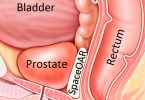Who Needs to Pay Attention to High Blood Sugar Symptoms?
Everyone. Why? Because at least 8.1 million people, approx. 28% of the population in the United States are walking around with High Blood Sugar Symptoms and they don’t know it.
Don’t be mistaken, family history, or excess weight, is not enough to determine the risk for any blood sugar disorder.

High Blood Sugar Symptoms & Surprises
No matter who you are, no matter how much you weigh and REGARDLESS of your family history, be aware of tell-tale high blood sugar symptoms.
Indeed, age is not important. If your body mass index is higher than 25 (23 for Asian-Americans), and you have risk factors that include heart disease, high blood pressure or cholesterol levels, polycystic ovary syndrome or relatives who have diabetes.
Excess weight is a high blood sugar symptom. However, there are thin people who appear healthy on the outside and who have metabolic conditions on the Inside. In fact, these individuals, are described as TOFI (thin outside fat inside).
For these reasons, not just for those who might seem at risk but everyone should be familiar with high blood sugar symptoms.
30 Tell Tale Insulin & High Blood Sugar Symptoms
In truth, this list reflects both high blood sugar symptoms and low blood sugar symptoms as well.
- Abdominal obesity (apple shape)
- Sugar/carbohydrate cravings
- Hunger after meals
- Fatigue after meals
- Frequent urination
- Increased thirst and appetite
- Difficulty losing weight
- Gut issues (bloating, gas)
- Sexual dysfunction
- Vision problems
- Numbness and tingling in lower extremities
- Rapid heartbeat
- Sudden mood changes
- Sudden nervousness
- Unexplained fatigue
- Pale skin
- Headache
- Shaking
- Sweating
- Difficulty sleeping
- Skin tingling
- Skin tags
- Gum disease
- Trouble thinking clearly or concentrating
- Cholesterol profile: Low HDL, high LDL, and high triglycerides
- High blood pressure
- High insulin levels
- High blood sugar symptoms as reflected by a fasting blood sugar above 100 mg/dL or a long term Hb1Ac measure above 5.5
- Inflammation as shown with an elevated C-reactive protein
- The tendency to form blood clots
High Blood Sugar Symptoms Screen For Diabetes
I personally do not understand the “prediabetes” term. If blood sugar is not normal, it should be treated as a high blood sugar symptom (diabetes). Why wait until the numbers are higher and the pancreas is more dysfunctional? What are the 5 stages of Type 2 Diabetes?
- Every 3 years for adults older than 45;
- Every 3 years for women with a history of gestational diabetes;
- Every year for anyone with prediabetes.
Blood Work & High Blood Sugar Symptoms
Each of these clinical blood test ranges will help guide you. The goal should always be to attain as close to the normal range as possible. This is regardless of any high blood sugar symptom or diagnosis.
Moreover, consistently staying in the normal range for each of these keeps you on track for living a good quality of life without diabetes complications. If your blood sugar is not normal, try using natural remedies to control high blood sugar symptoms.
- Fasting blood sugar: Blood sugar level checked after an 8 hour or overnight fast
- Normal: 70 – 89 mg/dl
- Borderline: 90 – 99 mg/dl
- Pre-diabetes: 100 – 125 mg/dl
- Diabetes: >126 mg/dl
- Random blood sugar: Blood sugar level check at anytime of the day
- Normal: less than 140 mg/dl
- Pre-diabetes: 141 – 199 mg/dl
- Diabetes: > 200 mg/dl
- HbA1c: Average blood sugar level for the past 2 to 3 months. This test measures what percentage of your hemoglobin (blood) is “coated with sugar”.
- Low blood sugar (Reactive hypoglycemia): less than 5.0 percent
- Normal : 5.0 to 5.6 percent
- Pre-diabetes: 5.7-6.4 percent
- Diabetes: >6.5 percent
- Fructosamine: A blood protein that measures average blood sugar level over 2 to 3 weeks. Albumin levels affect fructosamine.
- Normal : 175–280 mmol/L
- Fasting Insulin level*: Insulin level after an 8 hour fast.
- Low level (Reactive hypoglycemia): less than 3.0 mIU/ml
- Normal: 3.0 to 8.3 mIU/ml (3-5 may be a healthier target range)
- High level: >8.4 mIU/ml
*Stephen Guyenet, PhD, a neuroscientist at The University Washington, believes on average insulin levels in the U.S. for men are 8.8 mIU/ml and for women 8.4 mIU/ml. Therefore, it is likely that more people have insulin resistance than we might expect.
One study suggests that testing fasting insulin levels can detect prediabetes in 80% of patients whose results were > 9.0 microIU/mL).
- Oral glucose tolerance test: After an overnight fast, blood sugar is measured. Then, you drink a 75-gram glucose drink. Blood sugar levels are checked for 2 hours.
- Normal: <140 mg/dL (7.8 mmol/L)
- Prediabetes: 140 and 199 mg/dL (7.8 mmol/L and 11.0 mmol/L)
- Diabetes: >200 mg/dL (11.1 mmol/L)
- Fasting C-peptide level: C-peptide is produced by the beta cells in the pancreas. It helps identify insulin production. Therefore, it can help diagnose insulin resistance (high c-peptide), low blood sugar and differentiate between type 2 (low blood sugar, high c-peptide) and type 1 diabetes (high blood sugar, low c-peptide).
- Normal : 0.5 to 2.0 nanograms per milliliter.
High Blood Sugar Symptom Wrap Up
When it comes to high blood sugar symptoms don’t wait for a diagnosis. There may be no symptoms. Early care can prevent unnecessary blood sugar complications. you can minimize or reverse any damage.
Low or high blood sugar symptoms may or may not be apparent. First, understand the 5 stages of diabetes. Then use the 30 tell tale high blood sugar symptoms to help guide you. After, familiarize yourself with a low carb or keto diet and other natural remedies. Finally, ask your doctor to measure insulin levels and be ready to make lifestyle changes accordingly.
This will help to minimize or reverse any blood sugar associated health condition.
Why wait to be diagnosed with prediabetes, diabetes, insulin resistance, glucose toxicity, polycystic ovarian syndrome or low blood sugar?






